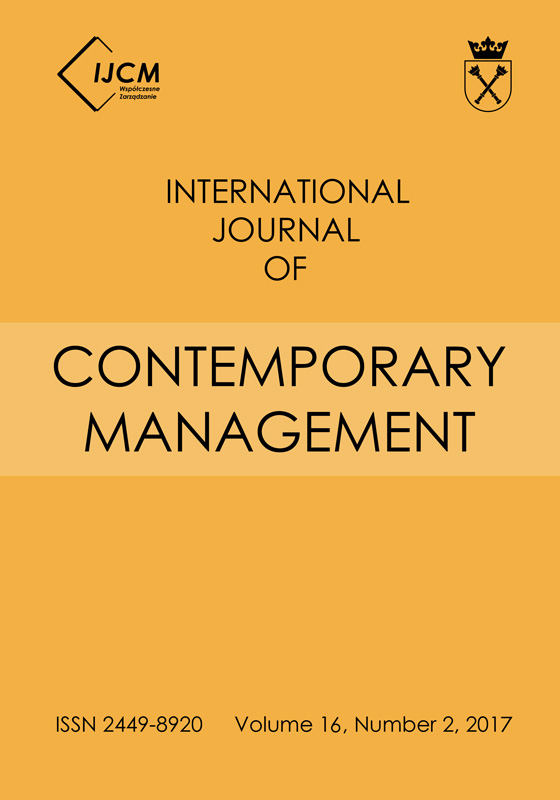Work Anomie in an Organisation
Work Anomie in an Organisation
Author(s): Barbara A. SypniewskaSubject(s): Business Economy / Management
Published by: Wydawnictwo Uniwersytetu Jagiellońskiego
Keywords: anomie at work; temptation; justifications; dignity dissonance
Summary/Abstract: Background. Anomie at work is a type of social anomie interrelated with professional activities that entail employees being exposed to repeated temptations. Under such conditions they come up with credible justifications that become fixed. Anomie manifests itself in organisations where there are values that have even been written down, but they are not held on to. One should seek the sources of anomie in the organisational culture, organisational structure, organisation of work, motivation and management methods, legal rules as well as in human behaviours and value systems, and in the mechanisms regulating social behaviours in an organisation. The phenomenon of anomie at work is part of the nature of any business, but every ethical act limits it. The objective of this paper is to analyse anomie at work, the conditioning and causes of this phenomenon, and methods of dealing with anomie at work.Research aims. The objective of this paper is to analyse anomie at work, the conditioning and causes of this phenomenon, and methods of dealing with anomie at work, taking into account the problem of temptation as well as to analyse the dissonance between one’s dignity and the inner justifications one uses, that is, excuses for improper conduct. The article presents the findings of own study carried out in 2017 on a group of 1,027 respondents. The analysis aims at identifying anomic behaviours and excuses offered to justify them, that is, explanations for inappropriate and unethical conduct. Simultaneously, the study is an attempt at verification of a thesis that the phenomenon of anomie at work is present in organisations regardless of the type of company activity, capital, and size, but it is dependent on gender, age, education, form of employment, and position. Methodology. In the first quarter of 2017, a questionnaire-based quantitative study was carried out with the use of survey questionnaires on a group of 1,027 people. The respondents were selected by way of purposive sampling. The selection criterion was employment in a company operating in Poland, regardless of company size. Self-employed persons were excluded from the study.Key findings. Based on the study, it may be claimed that the phenomenon of anomie at work is present in organisations and manifests itself in the form of different anomic behaviours. Similarly, there is a variety of justifications/excuses for one’s anomic behaviours, which serve as a basis for internal reinterpretation. The study demonstrated that the phenomenon of anomie at work is present in organisations regardless of the type of company activity, capital, and size, but it is dependent on gender, age, education, form of employment, and position.
Journal: International Journal of Contemporary Management
- Issue Year: 16/2017
- Issue No: 2
- Page Range: 235-265
- Page Count: 31
- Language: English

